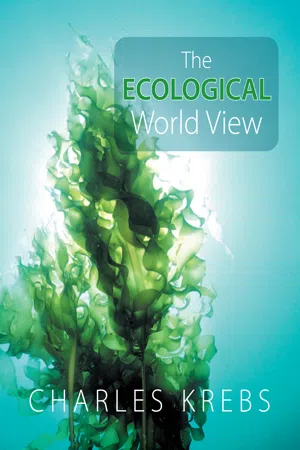Biological Sciences
Commensalism
Commensalism is a type of symbiotic relationship between two organisms where one benefits and the other is neither helped nor harmed. The organism that benefits is called the commensal, while the other is the host. This relationship is often seen in nature, such as with barnacles attaching themselves to whales for transportation without harming the whale.
Written by Perlego with AI-assistance
Related key terms
2 Key excerpts on "Commensalism"
- eBook - ePub
Ecology
From Individuals to Ecosystems
- Michael Begon, Colin R. Townsend(Authors)
- 2020(Publication Date)
- Wiley(Publisher)
2008 ).It would be mistaken to think of mutualism and Commensalism as less common or ecologically less important than competition, predation or parasitism (Bruno et al., 2003 ). Some animals and many plants provide habitat for their commensal partners. And almost all the plants that dominate grasslands, heaths and forests have roots that have an intimate mutualistic association with fungi, most corals depend on the unicellular algae within their cells, many flowering plants need their insect pollinators, and many animals carry communities of microorganisms within their guts that they require for effective digestion. In the next section we consider Commensalisms in more detail. Then we deal with examples of mutualism before finally considering mathematical models of Commensalism and mutualism.13.2 Commensalisms
'habitat' Commensalisms: ecosystem engineers provide habitat for other speciesThere are many ‘interactions’ between two species in which the first provides a habitat for the second, but there is no real suspicion that the first either benefits or suffers in any measurable way as a consequence. Trees, for example, provide habitats for the many species of birds, bats and climbing and scrambling animals that are absent from treeless environments. Lichens and mosses develop on tree trunks, and climbing plants such as ivy, vines and figs, though they root in the ground, use tree trunks as support to extend their foliage up into a forest canopy. Trees are therefore good examples of what have been called ecological or ecosystem ‘engineers’ (Jones et al., 1994 ). By their very presence, they create, modify or maintain habitats for others (see also Section 16.4 ). In marine communities, the solid surfaces of larger organisms are just as important contributors to biodiversity. Kelps and other seaweeds normally grow only where they can be anchored on rocks, but their fronds are colonised in turn by filamentous algae, tube‐forming worms (Spirorbis) and modular animals such as hydroids and bryozoans that depend on seaweeds for anchorage and access to resources in the moving waters of the sea. Turning to freshwater habitats, many crayfish species build burrows as refuges that are particularly important in seasonal environments that may dry up. Gramastacus insolitus, a threatened species endemic to shallow swamps and stream margins in southern Australia, is a very small crayfish (<4 cm total length) that does not build burrows. It only occurs as a commensal associated with larger species (G. falcata and Cherax destructor) that build deep burrows connected to the ground water, the smaller species using cracks and depressions in the burrows as aestivation sites in dry seasons. G. insolitus is part of an assemblage of animals that take advantage of this ‘engineered' habitat (Johnston & Robson, 2009 - eBook - ePub
- Charles Krebs(Author)
- 2008(Publication Date)
- CSIRO PUBLISHING(Publisher)
Commensalisms .Many mutualisms have been known for hundreds of years. Bees pollinate flowers and gain by obtaining pollen as food, while the plants gain by gene flow (through movement of pollen) and seed fertilization. Nitrogen-fixing bacteria and mycorrhizal fungi inhabit the roots of plants and gain protection and carbohydrates from the plant while supplying nitrogen or other soil nutrients to the plant in exchange. But we should always remember that there are costs to mutualisms as well as benefits, and we need to determine how the benefits exceed the costs for positive interactions. Ecologists first wish to describe these mutualisms and then ask how they might affect the distribution and abundance of species in nature (Essay 9.1).9.2 MUTUALISTIC INTERACTIONS OCCUR WHEN ANIMALS POLLINATE AND DEFEND PLANTS
While it is tempting to think of mutualisms in their simplest form as a two-species interaction—for example, between a particular pollinator and a particular plant species—in natural ecosystems specialized, two-species partnerships are rare. We must remember to think instead of multi-species systems in which, for example, many insects pollinate a particular plant, and a single pollinator may use pollen from several different plant species. For simplicity, most natural history studies concentrate on two-species interactions, from which we can gradually build a more complex picture. Let us consider two examples of mutualisms.ESSAY 9.1 WHY ARE CORALS BLEACHING?
Coral reef bleaching has increased dramatically in many tropical areas around the globe in the last 20 years. Corals are animals that contain symbiotic algae within their cells, and this symbiotic relationship is one of the most important mutualisms in the biosphere. The symbiotic algae provide color to the corals and undertake photosynthesis, thus contributing to coral growth—a positive relationship. When corals bleach they lose their symbiotic algae, and therefore their color, and often die. Widespread bleaching can cause the death of whole coral reefs. The primary cause of coral bleaching is thought to be elevated sea surface temperatures. Many reef-building corals live very close to their upper lethal temperatures, and small increases of 0.5 to 1.5°C over a few weeks, or larger increases of 3–4°C over several days, can kill corals (Huppert and Stone 1998
Learn about this page
Index pages curate the most relevant extracts from our library of academic textbooks. They’ve been created using an in-house natural language model (NLM), each adding context and meaning to key research topics.

